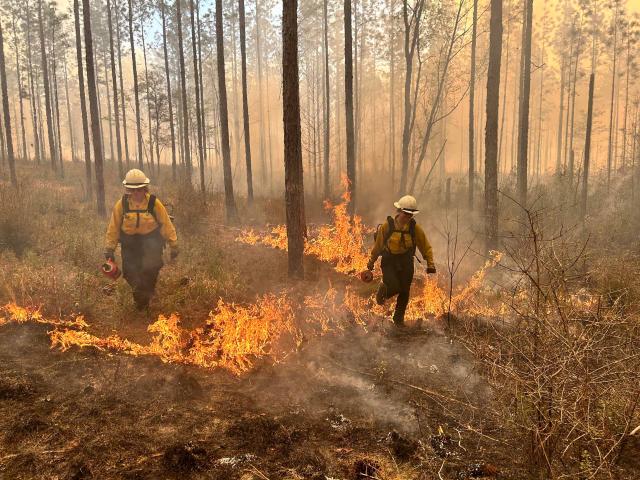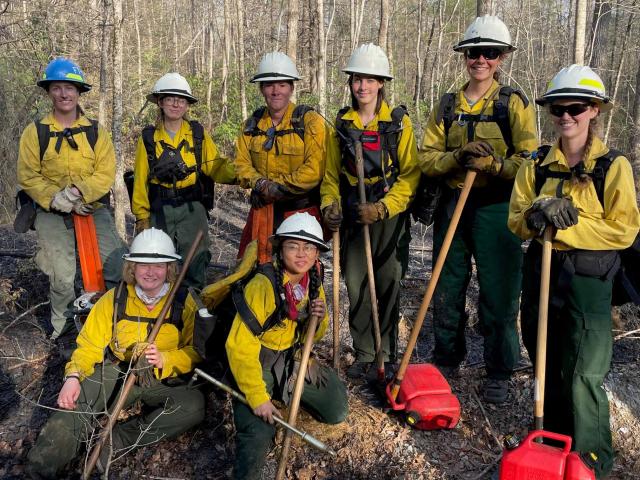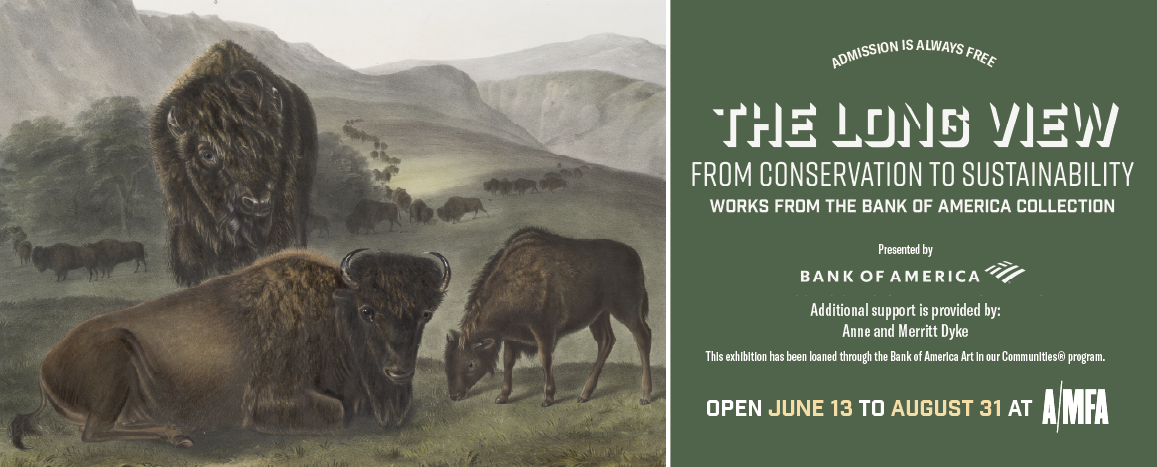(This article was shared by the US Forest Service as part of Women’s History Month.)
For 29 years, Elizabeth Bunzendahl has blazed a trail for women in fire.
“In the early days of my career, I faced overt gender bias and discrimination,” said Bunzendahl. “At the time, I was surprised to discover there was a portion of the population who truly believed that women couldn’t, and some thought shouldn’t, do the job of a wildland firefighter.”
Bunzendahl grew up on a farm, surrounded by sisters, where there was no division of chores based on gender. When she faced that bias and discrimination in her career, her response was to let her work and actions speak for themselves.
It took time, however, to be accepted as a wildland firefighter.
“A lot of women in fire have to continually prove themselves,” said Bunzendahl, who now leads a program at the USDA Forest Service’s Southern Region that focuses on cooperative fire, prevention and mitigation. “When unconscious gender bias shows itself through an archaic expression, perspective or inclination, I do speak up and try to use it as a teachable moment.”
Her experience isn’t unique. A 2019 survey by the Pacific Northwest Research Station found 75% of female wildland firefighters felt out of place due to their gender. The survey also revealed that one-third of the employees surveyed believed that personal characteristics such as race, gender, ethnicity, sexual orientation, age, disability status and family caregiver status had hindered their career advancement in wildland fire.

Currently, the fire workforce in the Forest Service is about 87% male and 13% female. Often, women face being the only female in a unit, or being one of the few.
“I have seen a lot of change over the past 29 years, and I’m happy to report that times have definitely improved,” Bunzendahl observed. “Conditions aren’t perfect for women entering the world of wildland fire, but I do feel that our society has evolved to recognize the diversity of people who are interested in wildland fire, who can perform well in it, and want to make it a career choice.”
Often, it’s the support of other women who make a difference in the career of another woman. A group of women, surveyed by Firehouse and Endeavor Research in 2001, said mentoring is the most effective way to help women move up the ranks.
That’s what happened for Bunzendahl. She started her career working for Joyce Bender, the first certified female burn boss in the state of Kentucky, who mentored her at the Office of Kentucky Nature Preserves. While there, she received her first fire training and began understanding fire ecology and fire’s role in restoring native grasslands.
The idea of women supporting women is growing. In 2016, the first-ever Women-in-Fire Prescribed Fire Training Exchange took place. These gatherings provide a supportive, inclusive environment where women (and men) can get hands-on training and learn about fire ecology, policy and social dynamics. Since its inception in 2016, gatherings have been held in California, Florida, North Carolina and Virginia.
To recruit women and support efforts to diversify fire staff, the Forest Service has launched programs such as the Wildland Firefighter Apprenticeship Program and 2023’s all-female wildland fire crew (that mentored interns with the Student Conservation Association).
Megan Saylors was one of those mentors; last year, she traveled to Clemson, South Carolina, from the Deschutes National Forest in Sisters, Oregon, to lead an all-female wildland fire crew.
That experience wasn’t the first time she’d mentored and supported women. Prior to coming to Oregon, she launched a training bootcamp for women in fire at the Dixie National Forest in Utah. The bootcamp used experiential learning to recruit more women into the profession.

“If we don’t have interactions with other females in fire, we don’t get to learn what they have experienced and gone through,” said Saylors.
The Forest Service’s Southern Region is home to the largest prescribed fire program in the world, with the region providing beneficial outcomes on more than 6 million acres each year. It’s also a training ground for the fire leaders of tomorrow, which is why the region embraces efforts to diversify and strengthen its workforce.
“There is still a long way to go to figure out how to best recruit, value and retain women in wildland firefighting,” said Bunzendahl, who works for the region. “However, some of the ways we can retain women are also the same ways we can retain all passionate and dedicated employees.”





